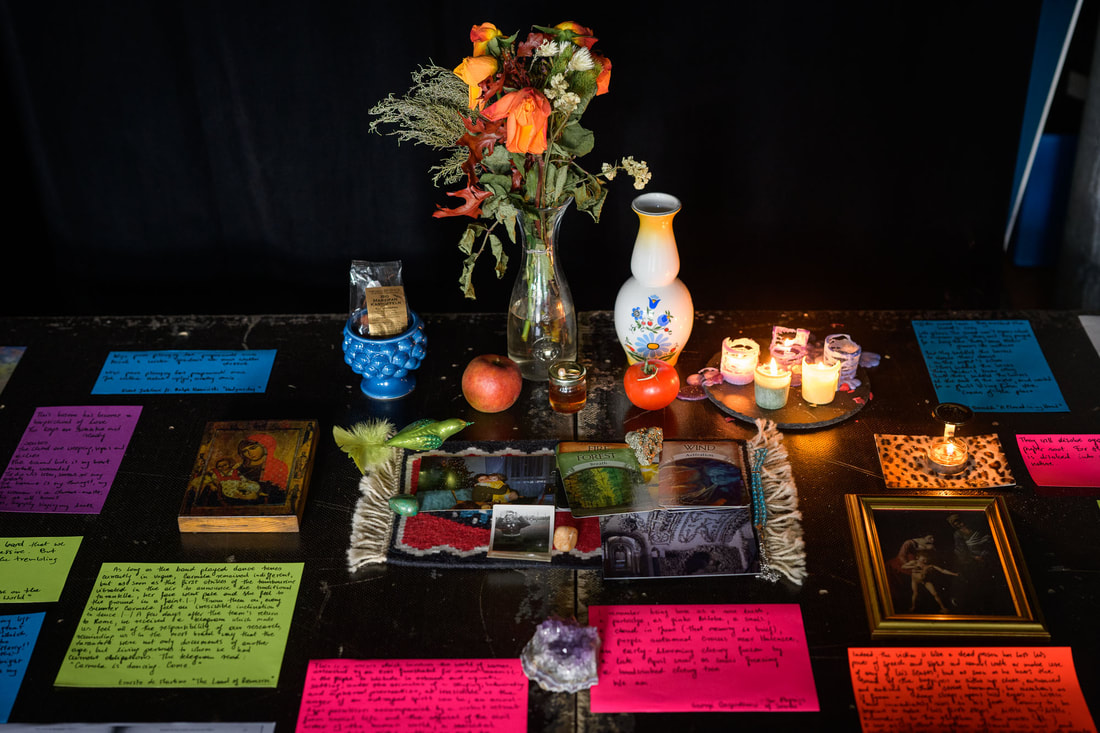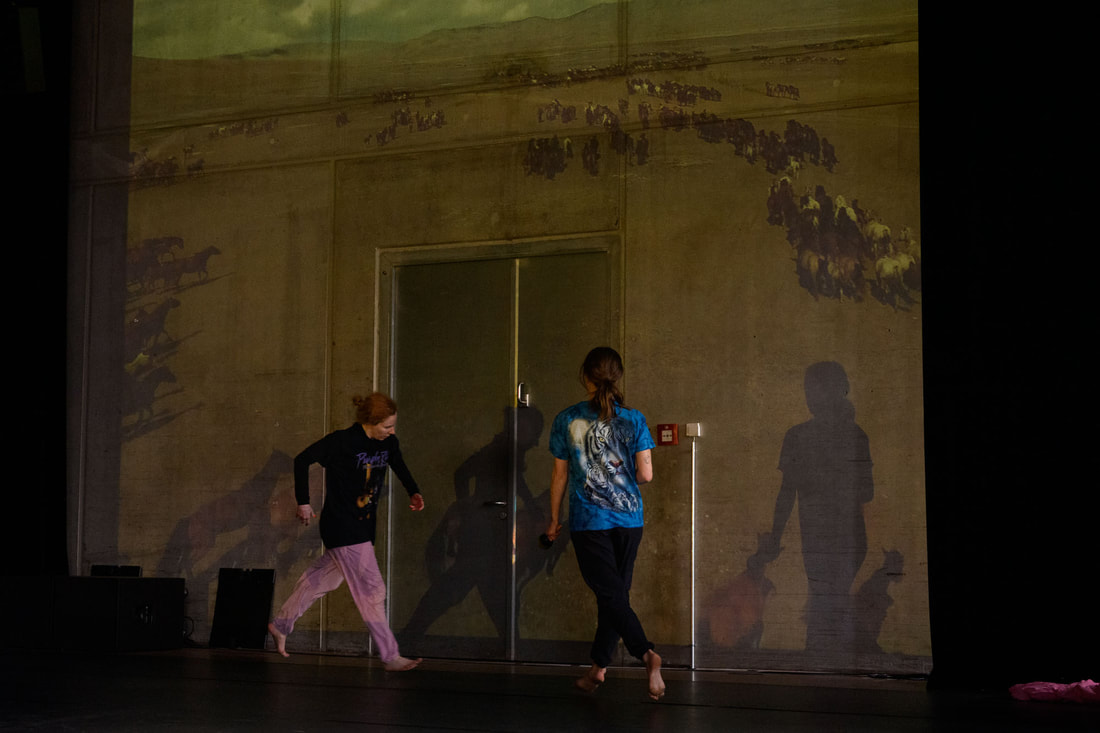A slow choreographic research into the intersections of dance and religion(s). The process was initiated thanks to the Body Time Space 2023 Residency at Radialsystem Berlin.
How possession, worship, ecstasy and deliverance are practiced? What are the techniques of transcendence, structuring of sacred space and time, scores for gatherings, which enable “the flash of spirit”, excitement and uplifting of the bodyminds, renewal of communities, and individuals along or against their social circumstances? My studies are concerned with how practices of dance are employed for broadly understood healing purposes - be it social reintegration of individuals in crisis, overcoming the collective distress, or reinventing a cultural code at times of oppression. Bringing those considerations back to the sphere of my own artistic practice means to examine the thinking and feeling processes that either enable or prevent dancing, as well as the conditioning of the spaces where dance occurs (e.g. smell, color, light, music). Furthermore, the dancing is proposed as a practice of self-knowledge, of entering the liminal states of social confusion and transition, and as a shared legacy of human communities seeking their own reproduction and rejuvenation.
Collaborating researchers, dramaturges and artists: Dr. Nasima Selim, Thomas F. DeFrantz, Julek Kreutzer, Ale Hop, Jette Büchsenschütz, Meave Johnson, Thomas Schaupp, Michelangelo Contini and Oleg Dziewanowski
Photos by Phil Dera
How possession, worship, ecstasy and deliverance are practiced? What are the techniques of transcendence, structuring of sacred space and time, scores for gatherings, which enable “the flash of spirit”, excitement and uplifting of the bodyminds, renewal of communities, and individuals along or against their social circumstances? My studies are concerned with how practices of dance are employed for broadly understood healing purposes - be it social reintegration of individuals in crisis, overcoming the collective distress, or reinventing a cultural code at times of oppression. Bringing those considerations back to the sphere of my own artistic practice means to examine the thinking and feeling processes that either enable or prevent dancing, as well as the conditioning of the spaces where dance occurs (e.g. smell, color, light, music). Furthermore, the dancing is proposed as a practice of self-knowledge, of entering the liminal states of social confusion and transition, and as a shared legacy of human communities seeking their own reproduction and rejuvenation.
Collaborating researchers, dramaturges and artists: Dr. Nasima Selim, Thomas F. DeFrantz, Julek Kreutzer, Ale Hop, Jette Büchsenschütz, Meave Johnson, Thomas Schaupp, Michelangelo Contini and Oleg Dziewanowski
Photos by Phil Dera
“This is a crisis (...) manifested in various elements (...) under the stimulus of stinging, hallucinating and ciphered provocation, as irresistible as the anger of an outraged spirit can be; an animal-type possession accompanied by the violent retreat from social life and the refusal of the civil order of the human world; a suicidal impulse which risks putting an end to the miserable flight; the hypnotic melody which accompanies the running about; the revelation of a destination and an end to a wandering which initially appeared aimless and endless; the resolution of the crisis in arboreal paradise flowing with perennial healing waters, where the reintegration of the unsettled female destiny is carried out and the human form and reason are regained symbolically and with the aid of the divine forces which were themselves part of the drama’s origins.”
Ernesto De Martino, The Land of Remorse (1959)
In their (artists’ and prophets’) productions we may catch a glimpse of that unused evolutionary potential in mankind which has not yet been externalized and fixed in structure.
Victor Turner, The Ritual Process (1969)














